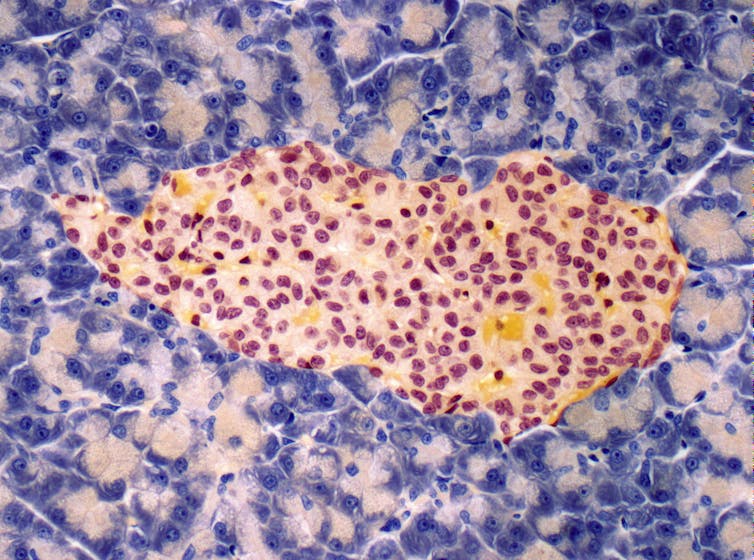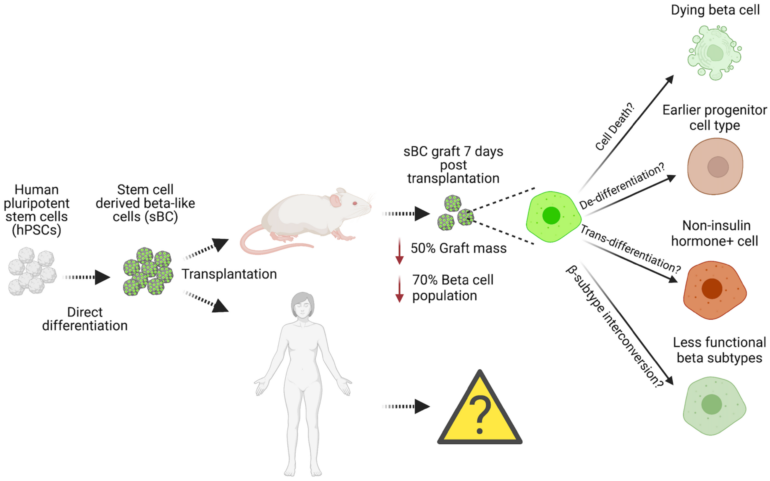Diabetes develops when the body fails to manage its blood glucose levels. One form of diabetes causes the body to not respond to insulin at all. Called Type 1 diabetes, or T1D, this autoimmune disease happens when the body’s defense system mistakes its own insulin-producing cells as foreign and kills them. On average, T1D can lead patients to lose an average of 32 years of healthy life.
Current treatment for T1D involves lifelong insulin injections. While effective, patients taking insulin risk developing low blood glucose levels, which can cause symptoms such as shakiness, irritability, hunger, confusion and dizziness. Severe cases can result in seizures or unconsciousness. Real-time blood glucose monitors and injection devices can help avoid low blood sugar levels by controlling insulin release, but they don’t work for some patients.
For these patients, a treatment called islet transplantation can help better control blood glucose by giving them both new insulin-producing cells as well as cells that prevent glucose levels from falling too low. However, it is limited by donor availability and the need to use immunosuppressive drugs. Only about 10% of T1D patients are eligible for islet transplants.
In my work as a diabetes researcher, my colleagues and I have found that making islets from stem cells can help overcome transplantation challenges.
History of islet transplantation
Islet transplantation for Type 1 diabetes was FDA approved in 2023 after more than a century of investigation.
Insulin-producing cells, also called beta cells, are located in regions of the pancreas called islets of Langerhans. They are present in clusters of cells that produce other hormones involved in metabolism, such as glucagon, which increases blood glucose levels; somatostatin, which inhibits insulin and glucagon; and ghrelin, which signals hunger. Anatomist Paul Langerhans discovered islets in 1869 while studying the microscopic anatomy of the pancreas, observing that these cell clusters stained distinctly from other cells.
The road to islet transplantation has faced many hurdles since pathologist Gustave-Édouard Laguesse first speculated about the role islets play in hormone production in the late 19th century. In 1893, researchers attempted to treat a 13-year-old boy dying of diabetes with a sheep pancreas transplant. While they saw a slight improvement in blood glucose levels, the boy died three days after the procedure.

The islets of Langerhans, located in the pancreas and colored yellow here, secrete hormones such as insulin and glucagon.
Steve Gschmeissner/Science Photo Library via Getty Images
Interest in islet transplantation was renewed in 1972, when scientist Paul E. Lacy successfully transplanted islets in a diabetic rat. After that, many research groups tried islet transplantation in people, with no or limited success.
In 1999, transplant surgeon James Shapiro and his team successfully…



